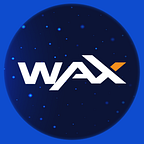Understanding a new token’s mechanics can be pretty difficult. Not only do you have to understand the actual mechanisms, but the mechanisms don’t make much sense outside of the context of the goals. As we’ve explained before, WAX Tokens are meant to be used by a specific audience: gamers. In order to understand some of the technical choices we’ve made, you have to understand what’s important to our customers.
Securing the Blockchain
In order to operate a blockchain, we need some way to secure the chain. Security is a very important aspect of what our customers are looking for, and verifying whether an exchange of goods for tokens went through properly is the most import aspect of WAX’s value proposition.
If, for example, we used something like proof-of-work to secure our chain, the miner who mined the block would have to verify every single transaction in every single game. This is not an easy undertaking, since there may be hundreds of games that have trades in a single block, and making each miner responsible for verifying across such a vast domain would be impractical.
In addition, proof-of-work is based on calculating a lot of hashes, so it’s very difficult to reverse the block and thus prevent double-spends. This doesn’t really make sense for WAX, since double-spending is not a problem — the digital asset, once transferred, cannot be rescinded without a user’s consent. We have transfer agents who are already economically disincentivized to cheat. Proof-of-work, then, in the context of WAX, doesn’t really make sense.
Proof-of-stake, however, is based on token voting. This could make sense, but once again, it would require each staking entity to verify all the transactions in the block. If the block has transactions from hundreds of games, this will be very expensive, especially since token holders won’t likely have the resources to check that the transactions went through.
Our requirements, at this point, should be fairly clear:
- Each block needs verification.
- No wasteful proof-of-work should be done.
- Costs of verifying should be minimized.
This is where Delegated-Proof-of-Stake (DPoS) comes in. We’ve designed our blockchain so that each block consists of transactions from only one game. That way, the entity verifying the transactions from the block can specialize in only a single game. At the very least this makes verifying each transaction much, much easier.
However, we still don’t want to have random individuals verifying these transactions. That would be too much work. We instead delegate that responsibility to bigger entities that can do this work efficiently. Users can delegate verification responsibilities to what we call Guilds. Guilds will verify the blockchain to provide security for the users of that game. Thus, it’s going to be in the interest of gamers to delegate their token voting rights to the Guilds that service games they play and trade in. Each Guild will get a chance to verify a block based on a round-robin system with an initial pool of 64 guilds.
This system we’ve designed highlights how we’re building a system that fits the needs of our users. Retrofitting an existing coin to a use case like in-game item trading is difficult for that reason. Creating our own coin gives our users a lot more security, as each Guild only has to make sure the transactions verify for a single game.
Liquid Market
WAX makes in-game items highly liquid. This is very important for our customers, since gamers would rather be playing their games than marketing their wares. We make this simple by creating a marketplace for gamers all around the world.
We fully admit this may eat into our existing business: OPSkins. We know that a centralized marketplace can be convenient for certain things, and it’s certainly very profitable for us. But centralization also has problems in terms of liquidity. Not everyone is able to participate in our marketplace, because they may live in a country that makes banking difficult. We offer many languages, but not all. We believe that a decentralized marketplace with a token available everywhere makes in-game items much more liquid.
Again, we could do this on another blockchain, but that would be mixed with all sorts of other use cases that wouldn’t have nearly the speed that our customers are used to. We want to design the blockchain in such a way as to offer greater liquidity and security than what we have currently.
Convenient User Experience
Once security and liquidity are taken care of, we can focus on a great user experience. This is currently not possible on other blockchains as they’re very slow. Having a DPoS system allows us to have very quick blocks (on the order of seconds or less, or about a web page refresh) and allow trading to occur with very low friction.
Bitcoin, Ethereum, and others, as useful as they are, do not have very quick blocks. By leveraging what we’ve learned and moving away from proof-of-work, we can speed up the transactions. Our DPoS system requires guilds to be online 24/7 and requires signatures, not expensive proof-of-work. This is how we achieve a large transaction throughput.
Price
The odd thing about our industry is that most people think we focus on price as the main attribute that drives our business at OPSkins. Our business is anything but. Price is the result of security, liquidity, and convenience, not the other way around. We’ve found that a fair market price is easy to establish when the other three are present. Our technical decisions, as a result, are focused much more on designing security, liquidity, and convenience into the system. Security, liquidity, and convenience reduce friction, and that’s important to reducing costs, which in a decentralized application like WAX, ultimately benefits the users: the gamers.
